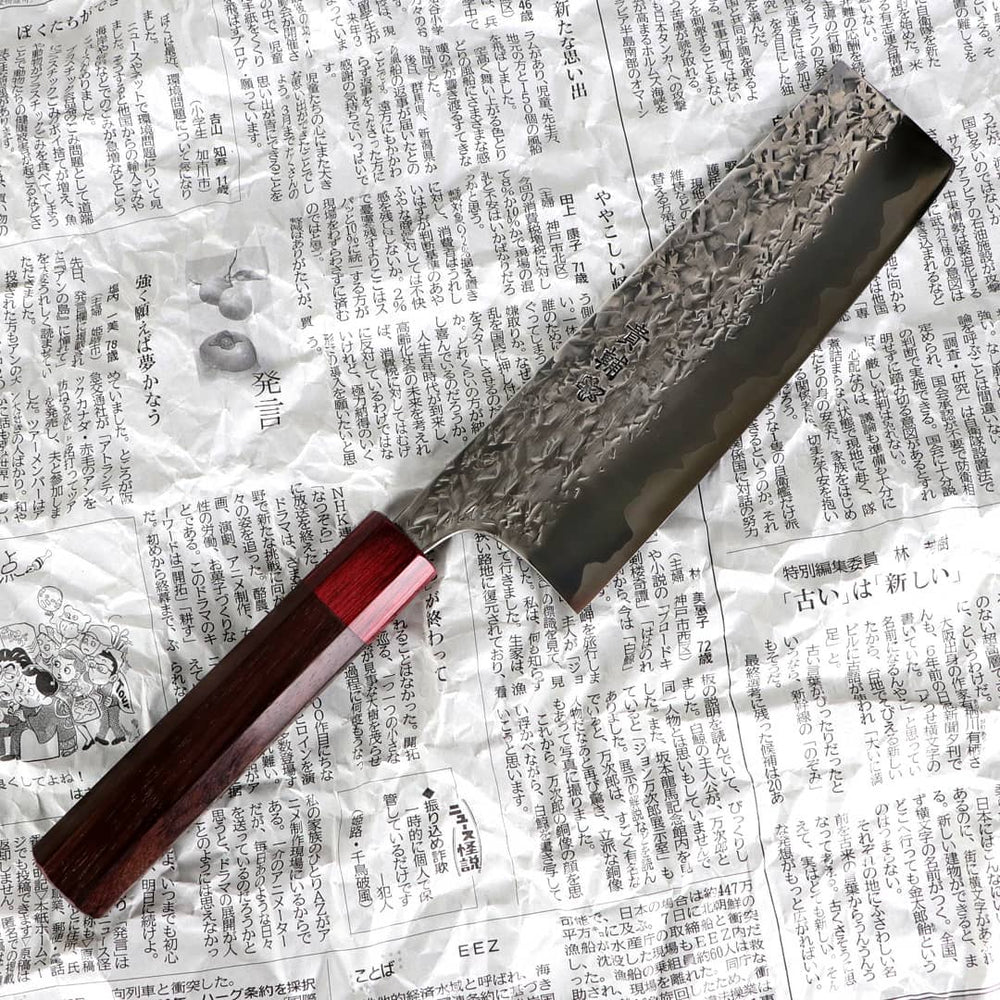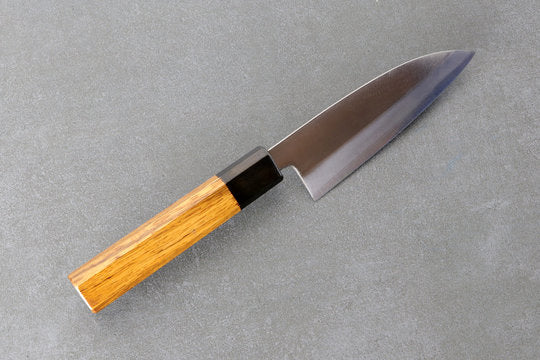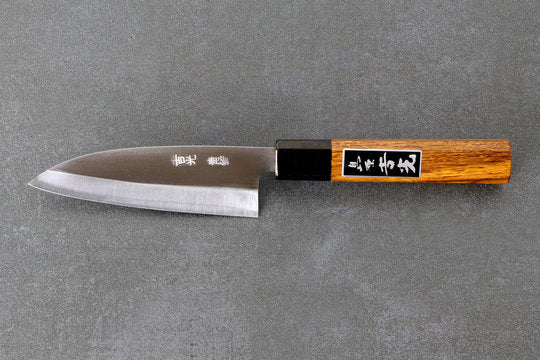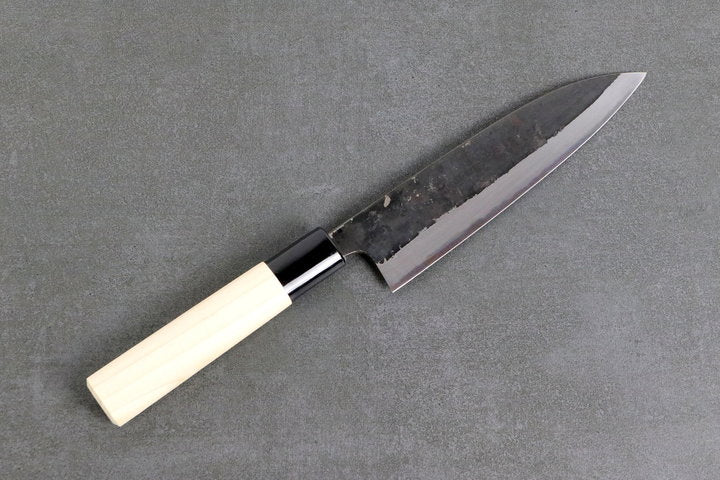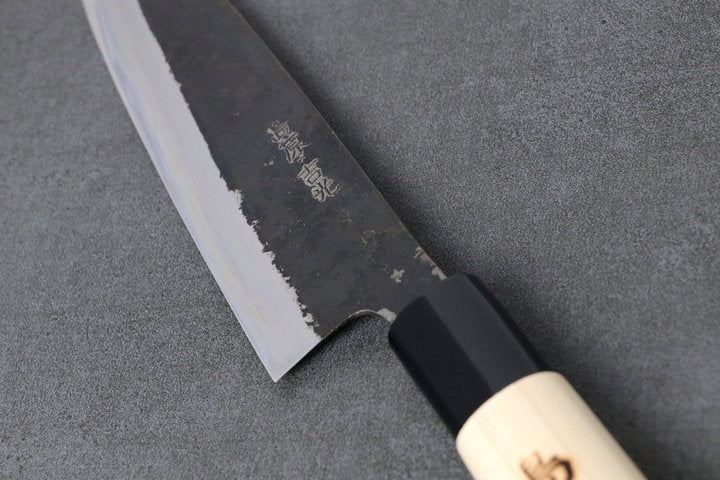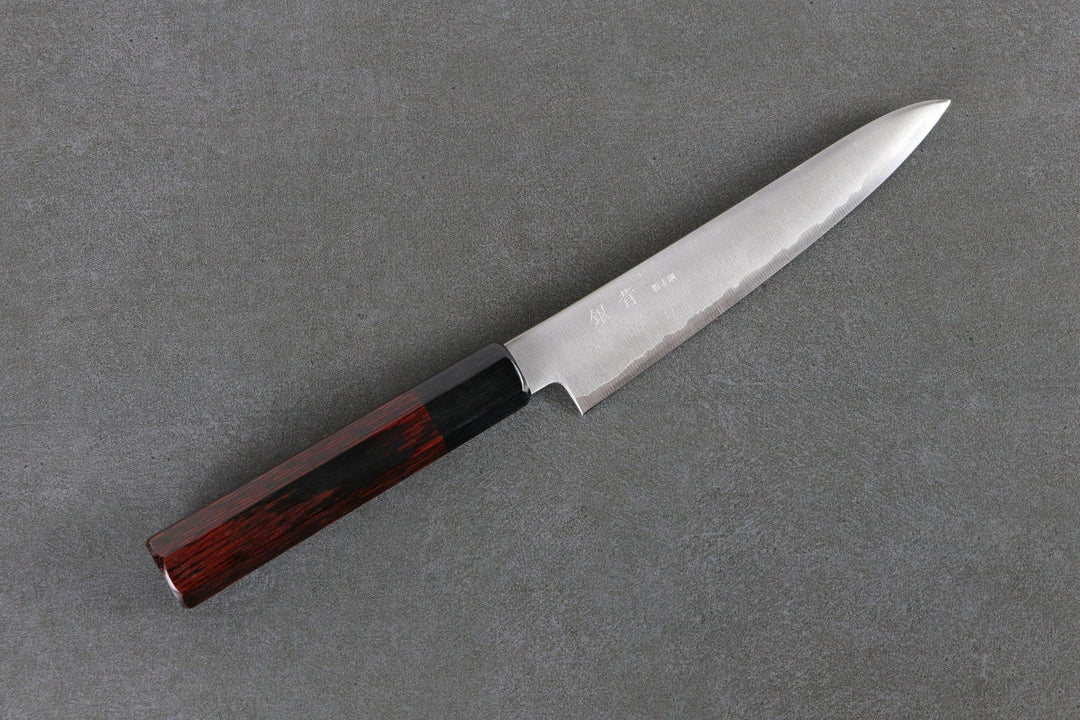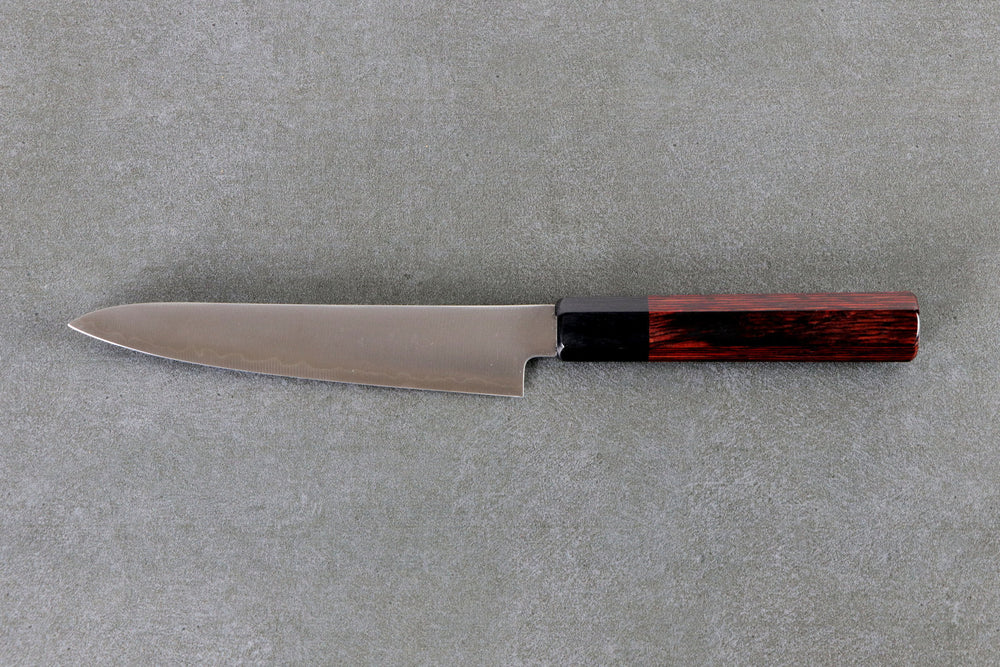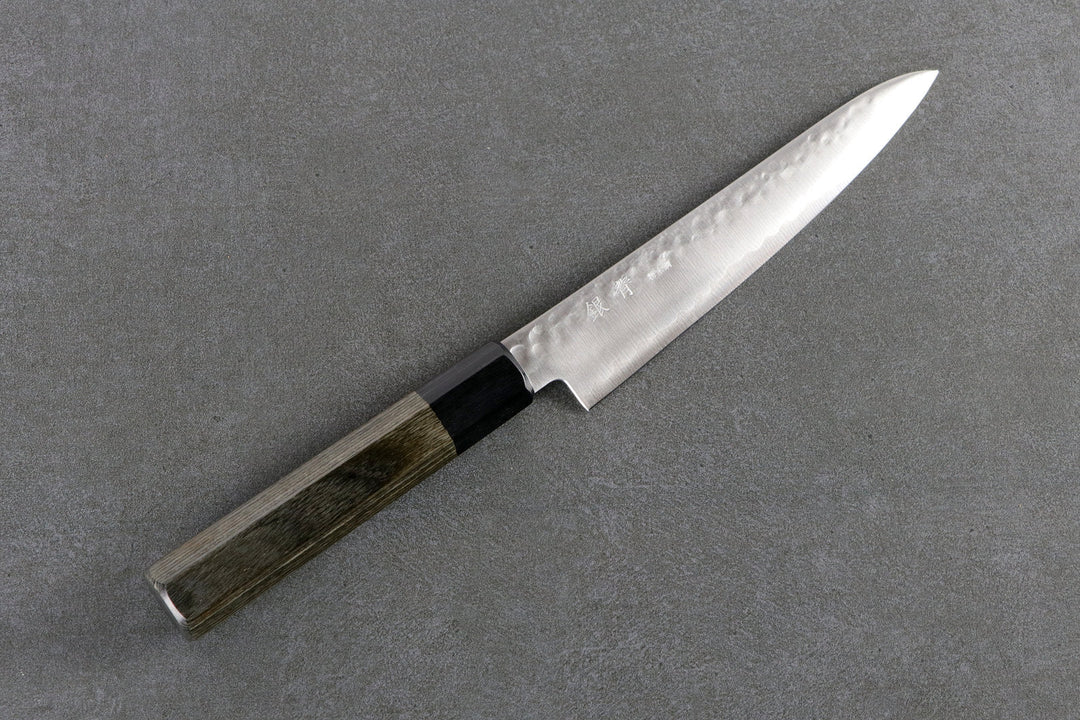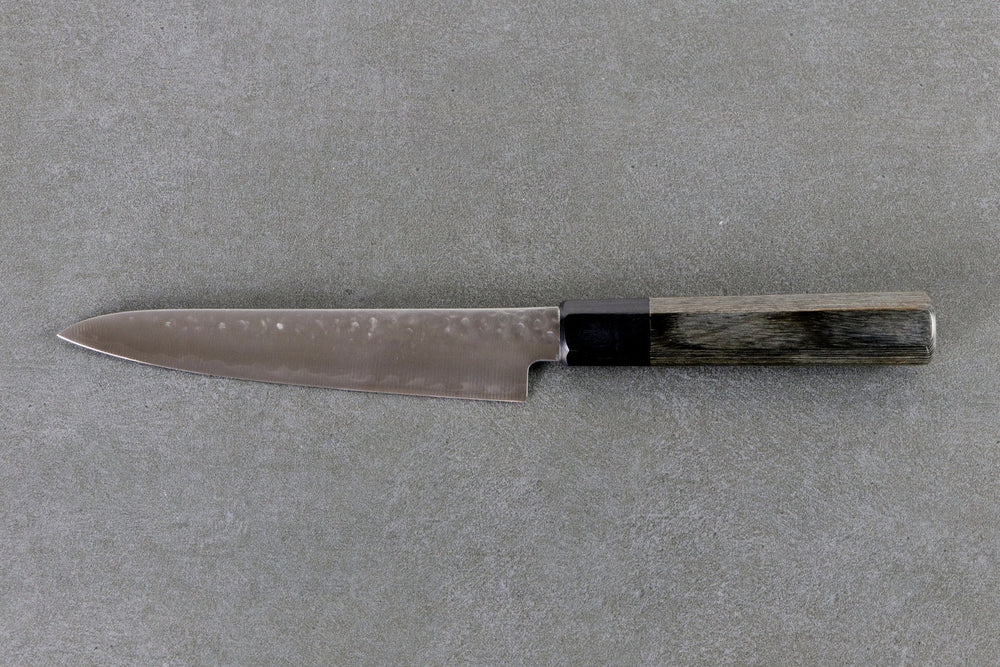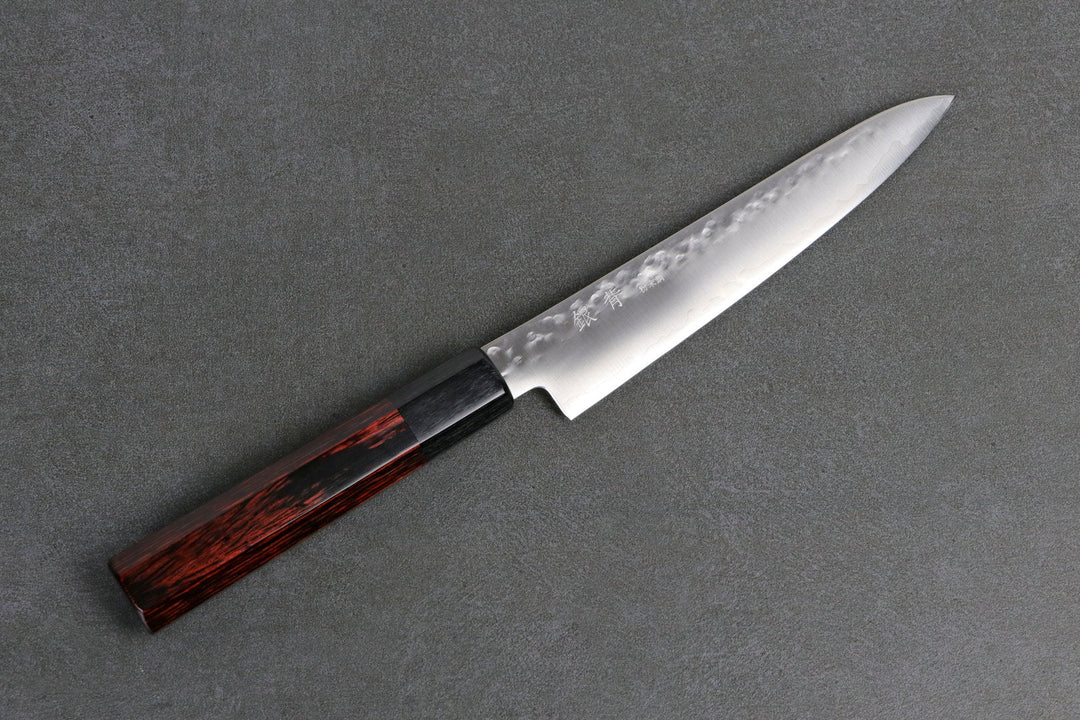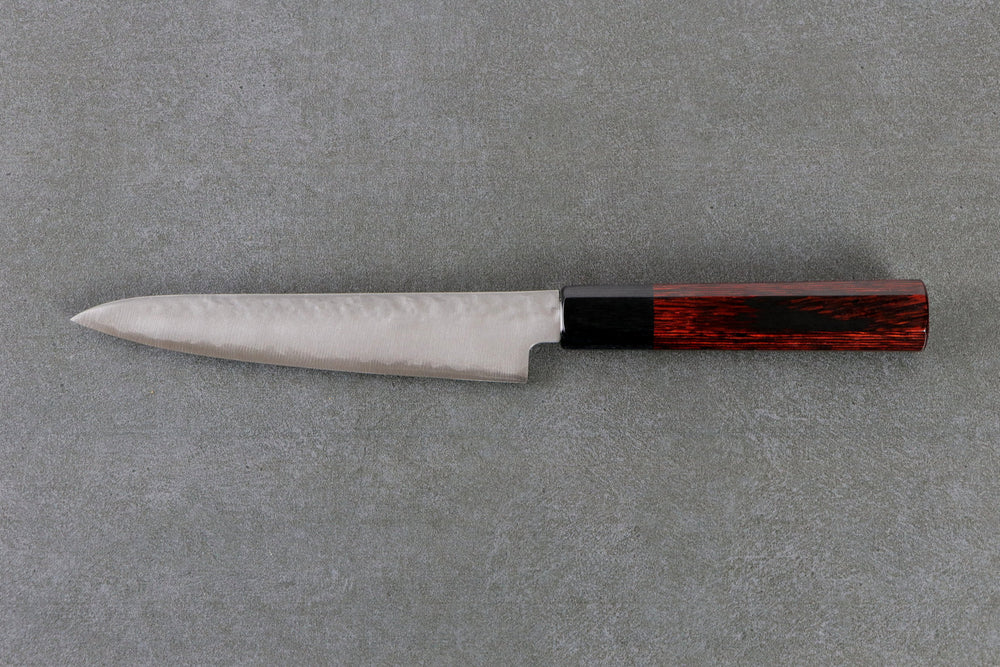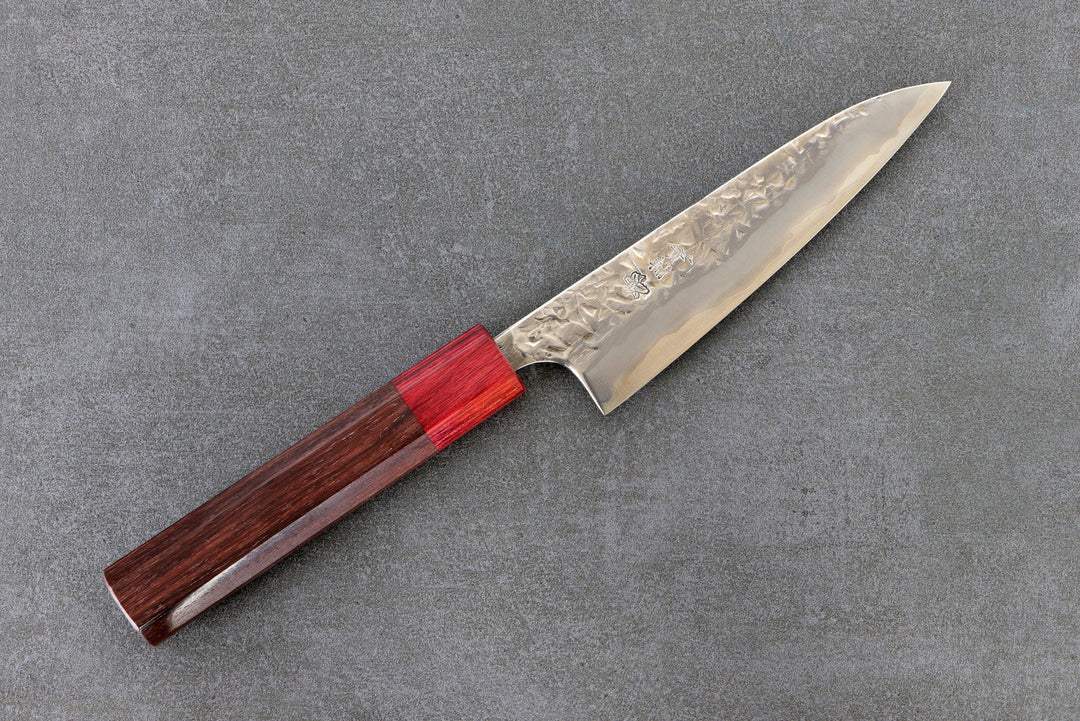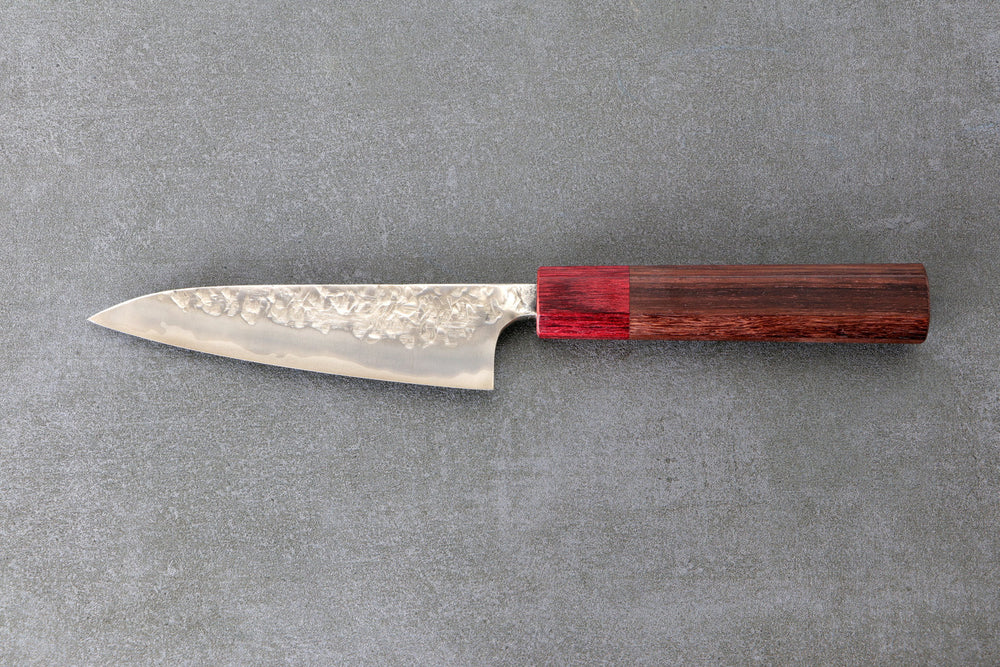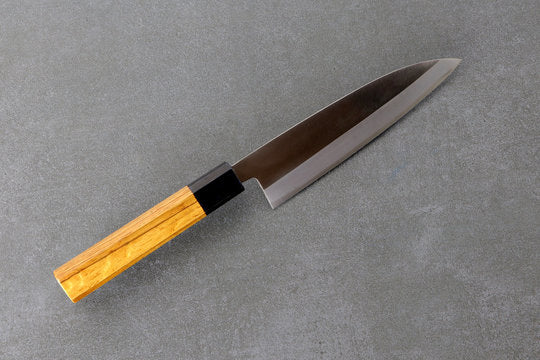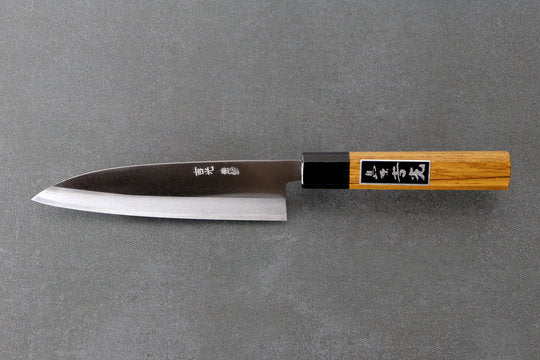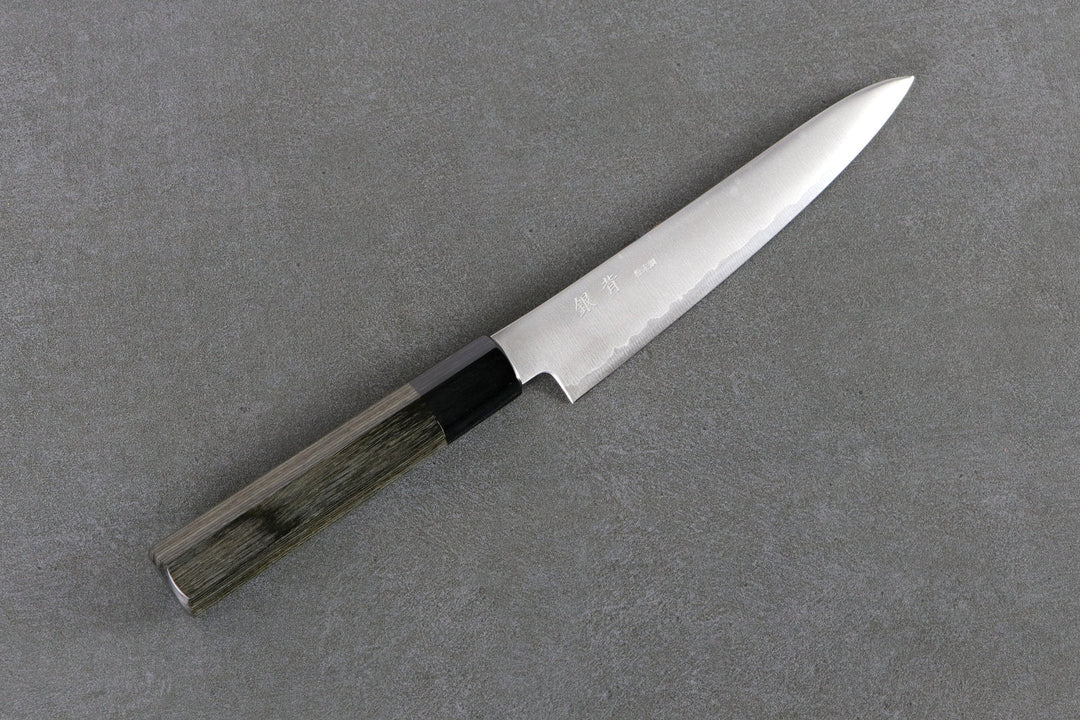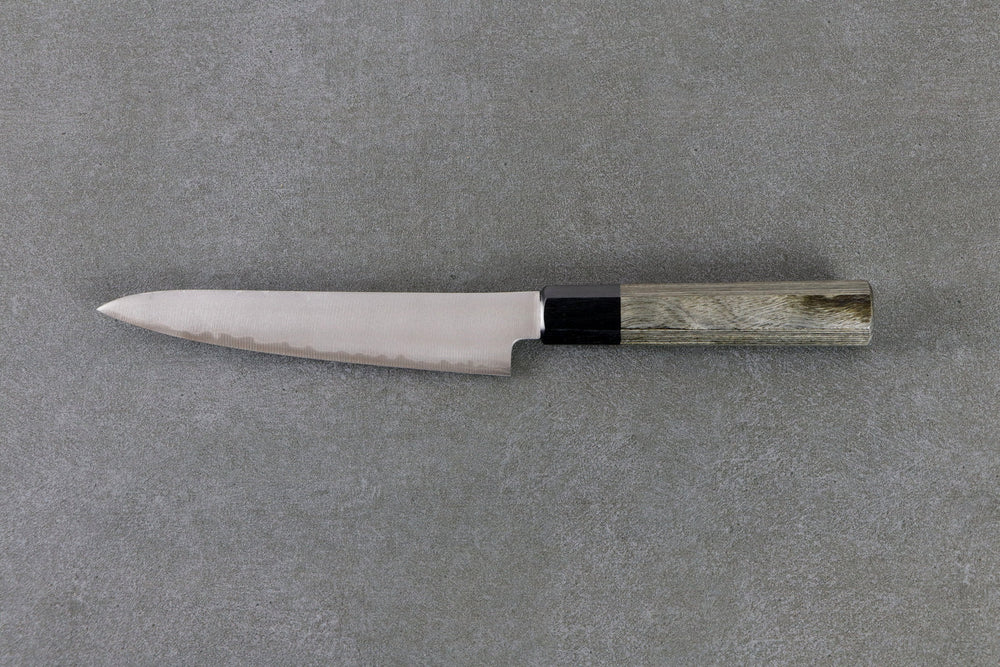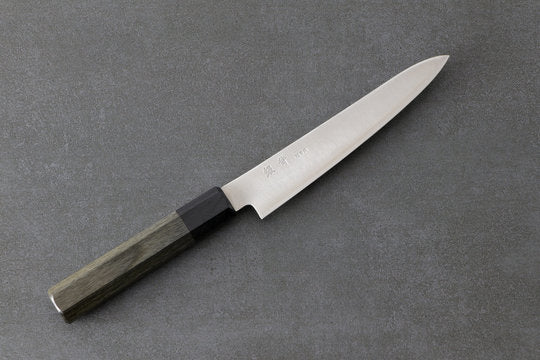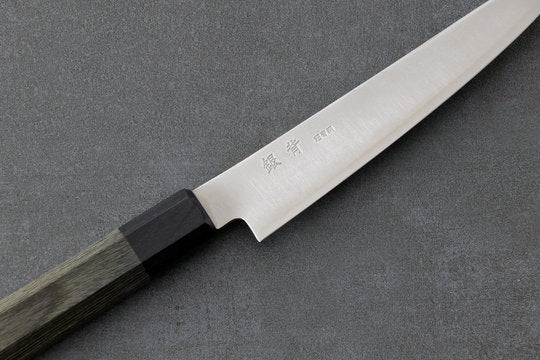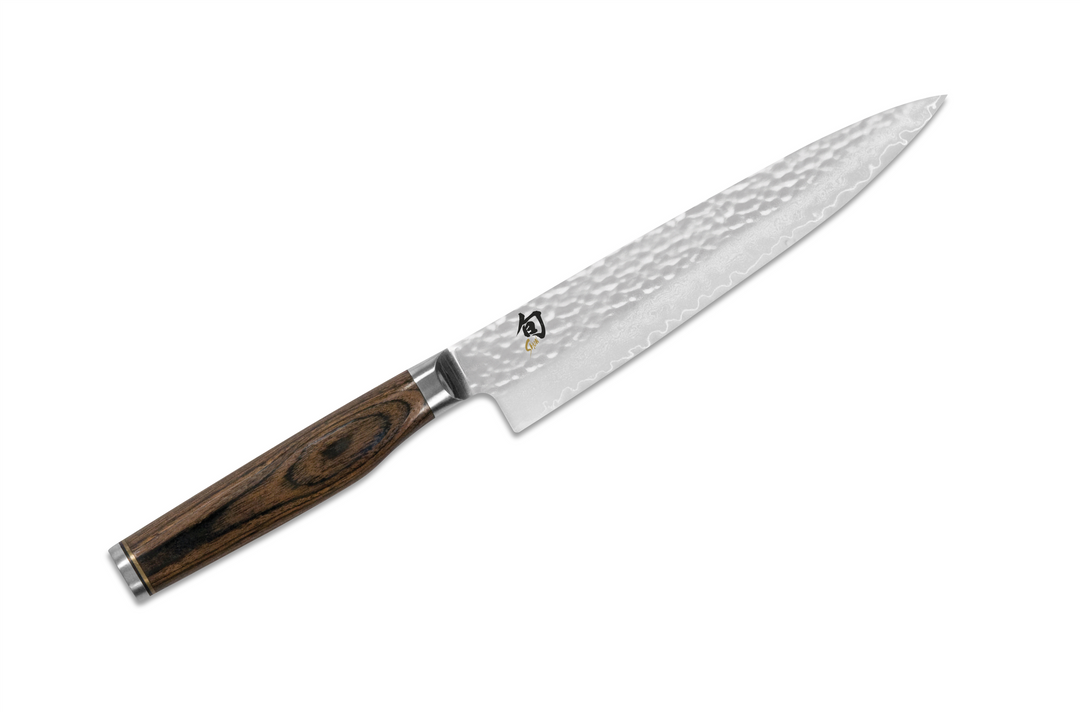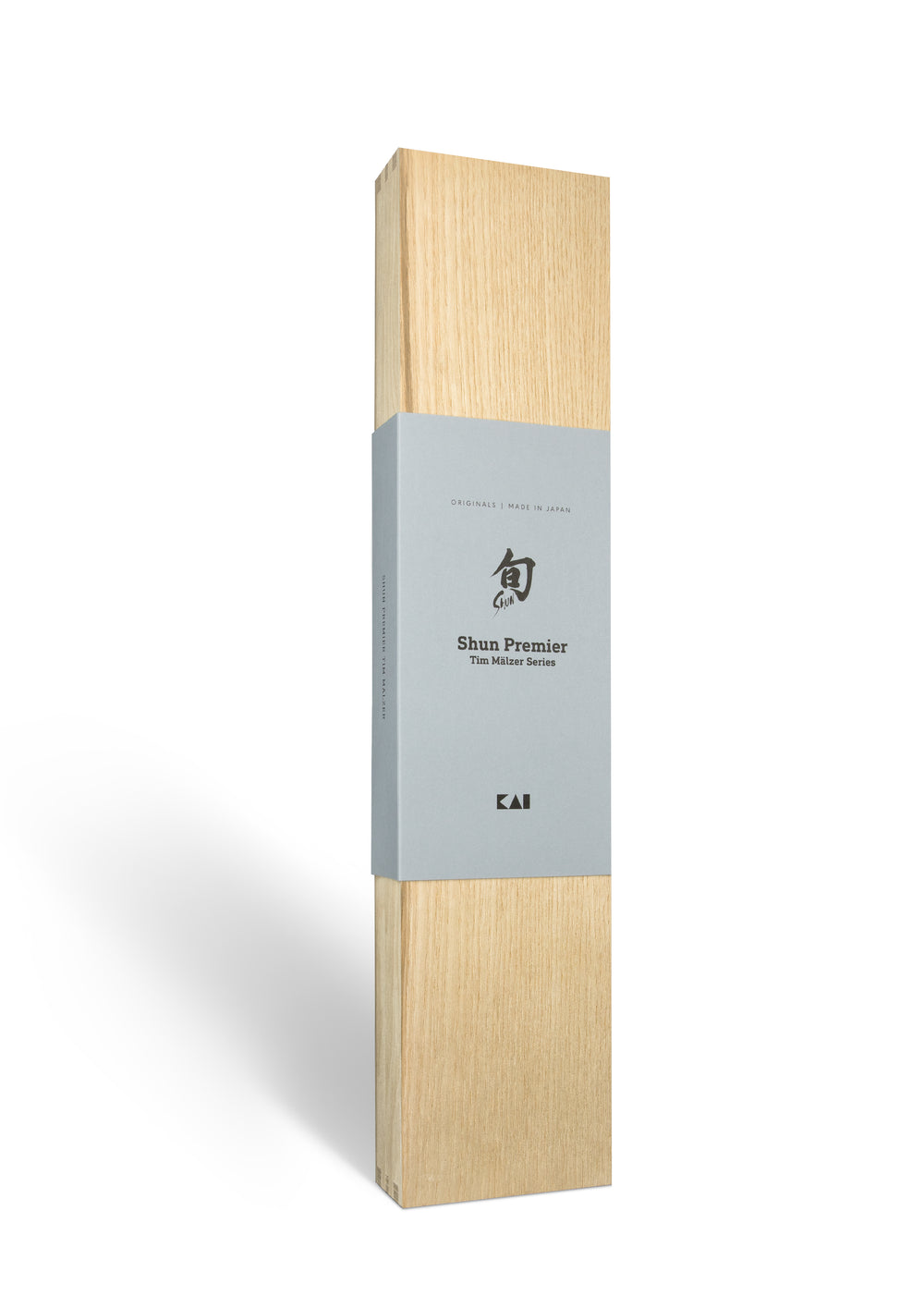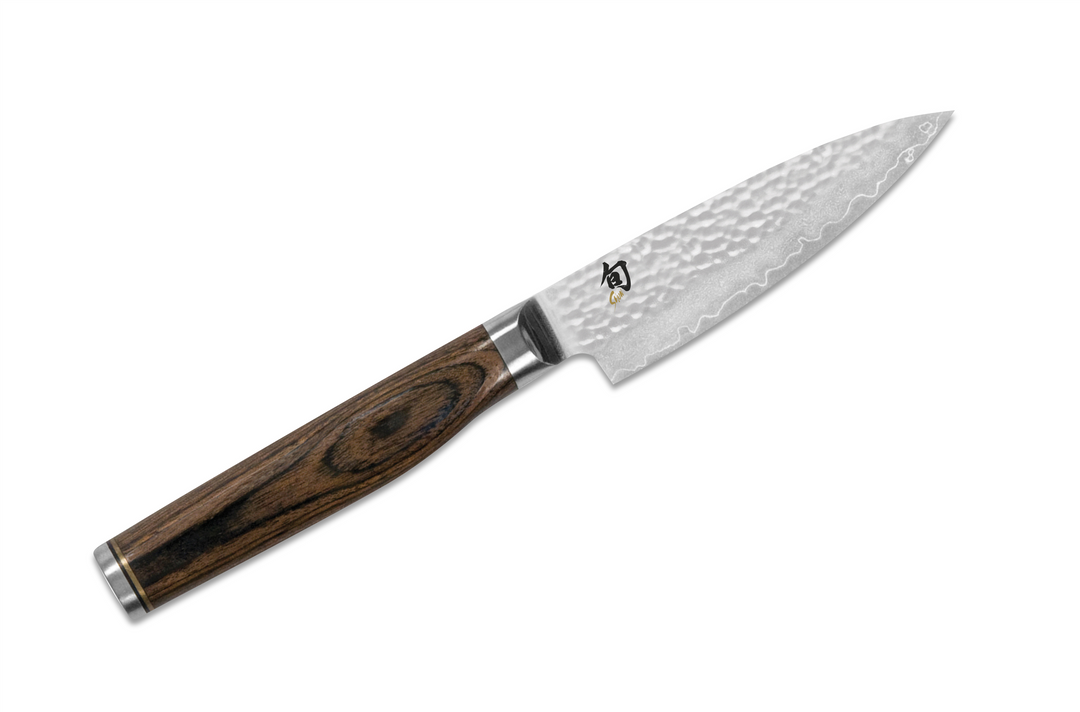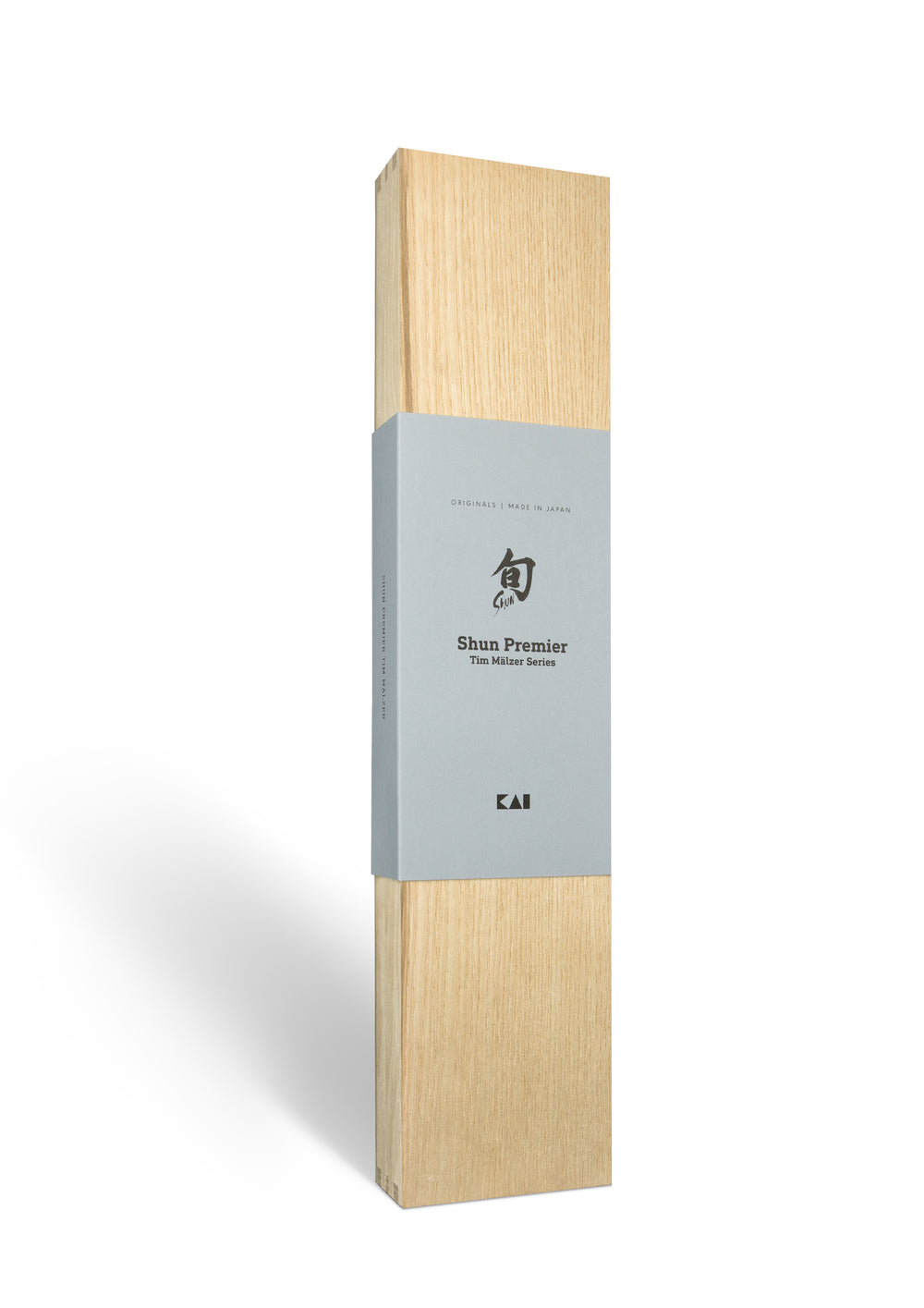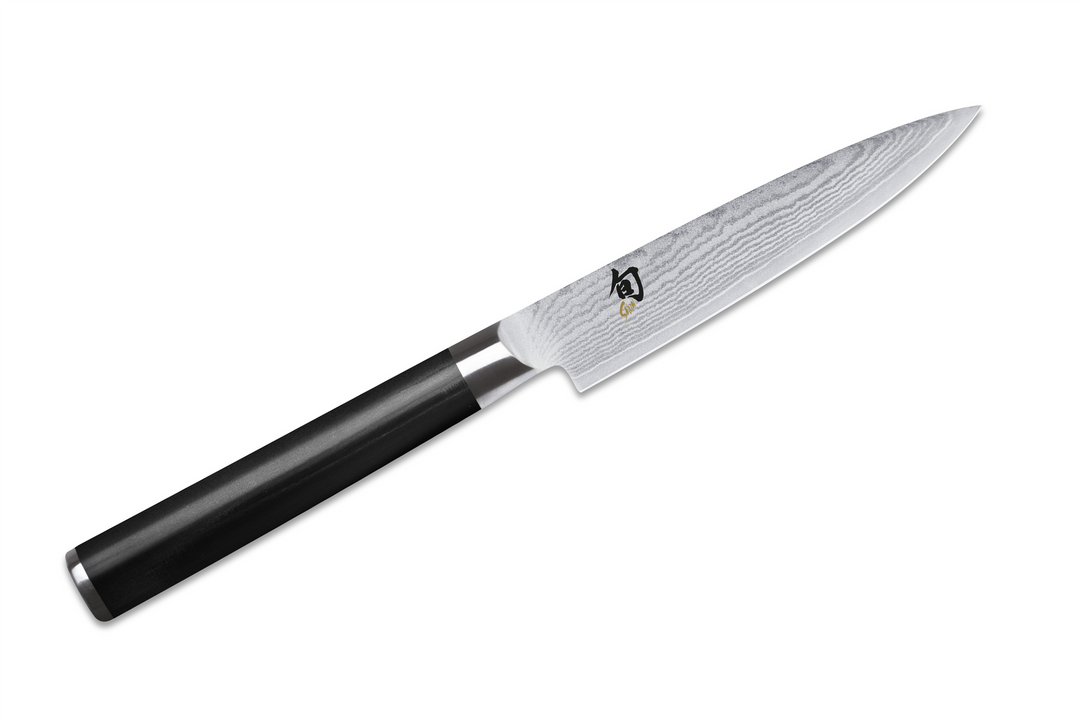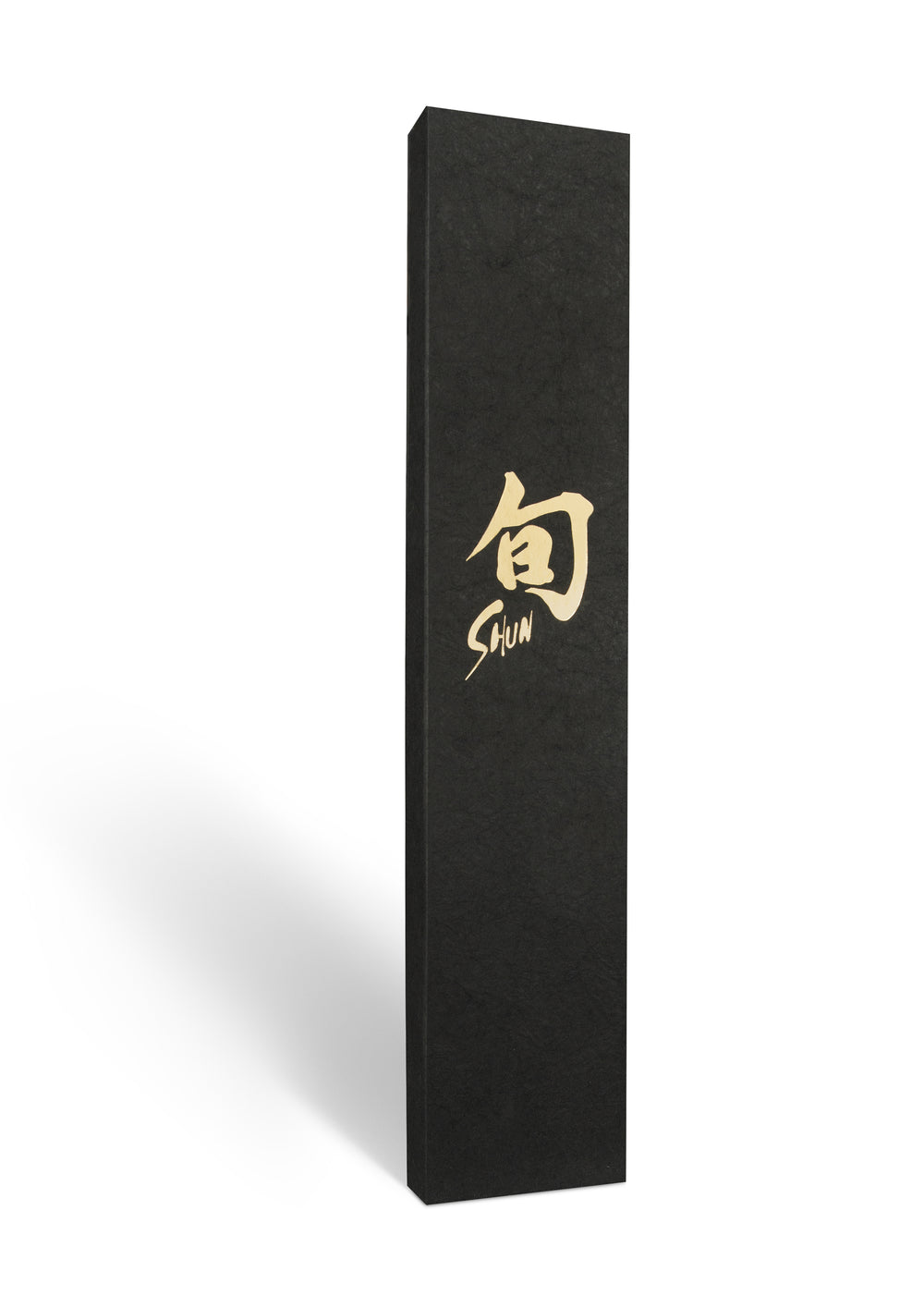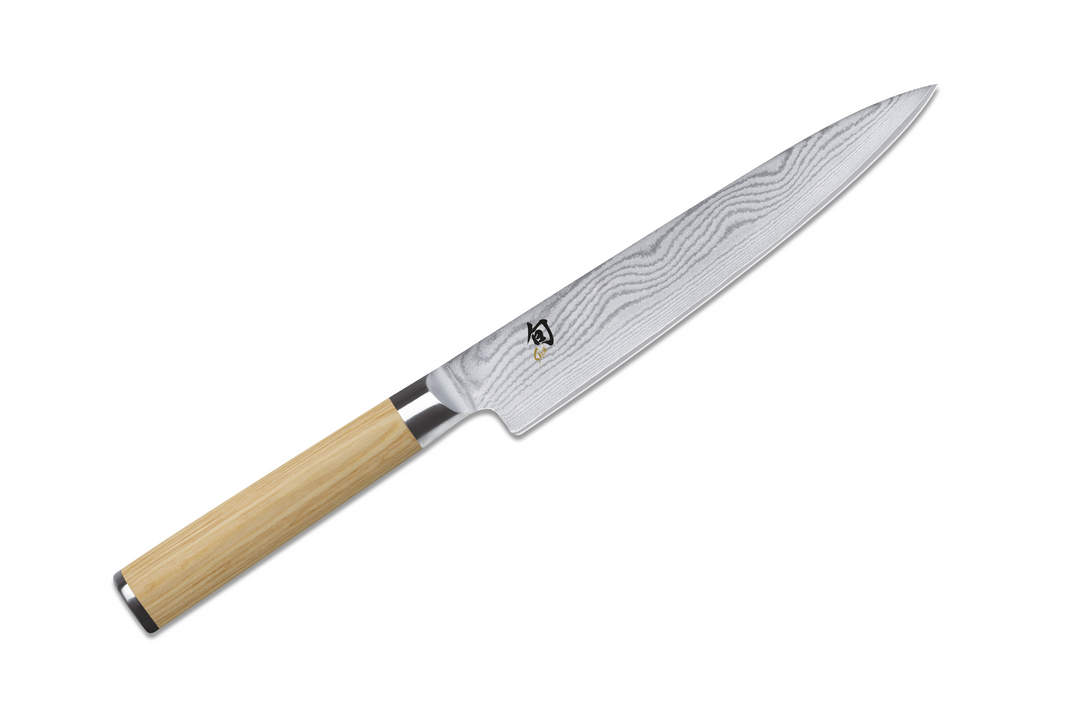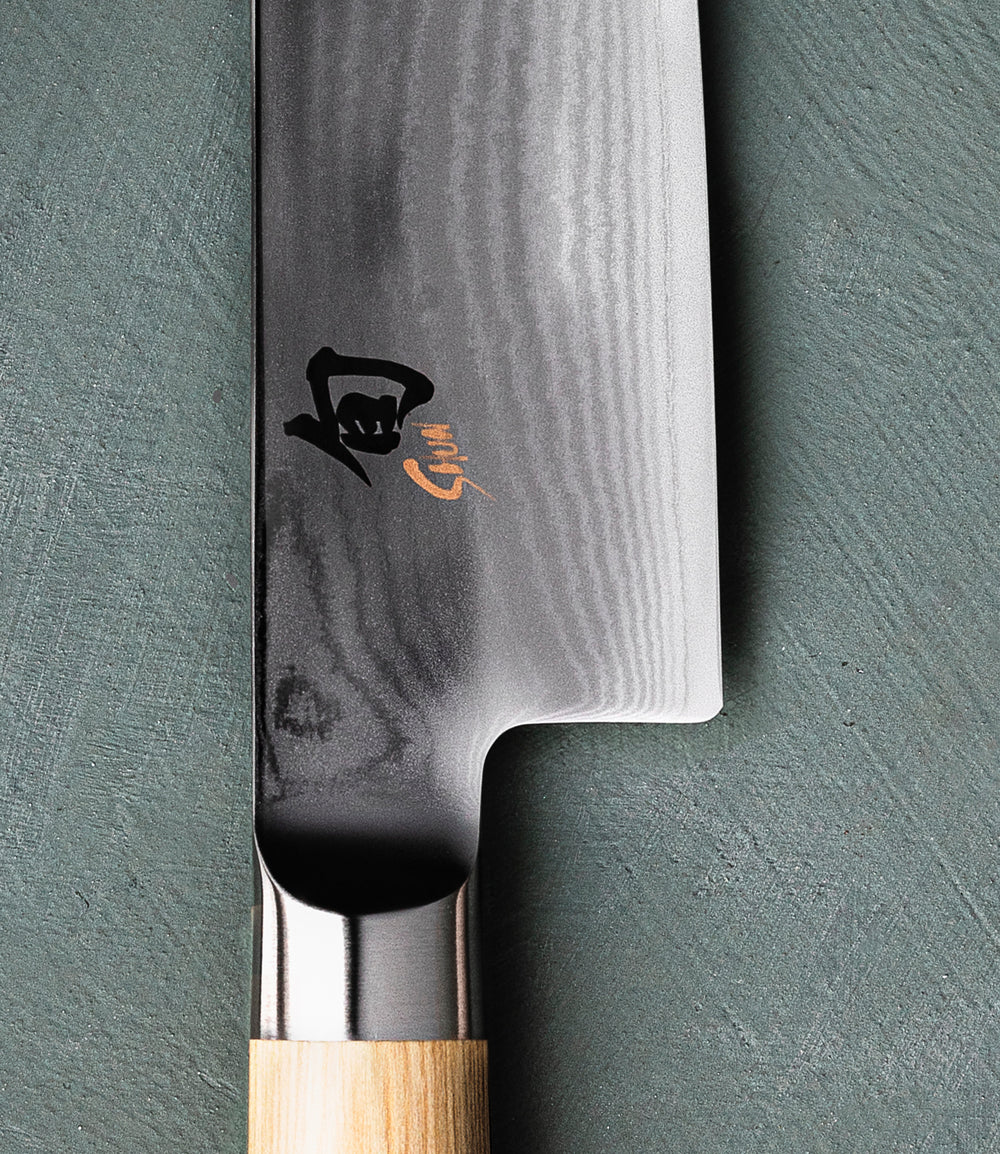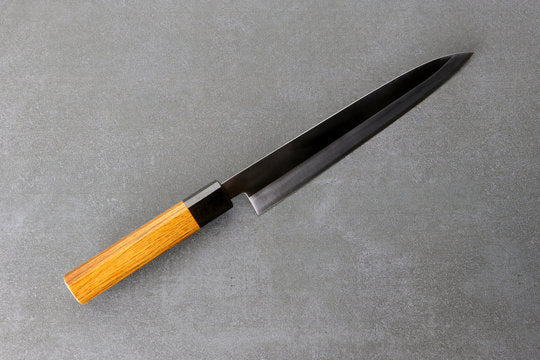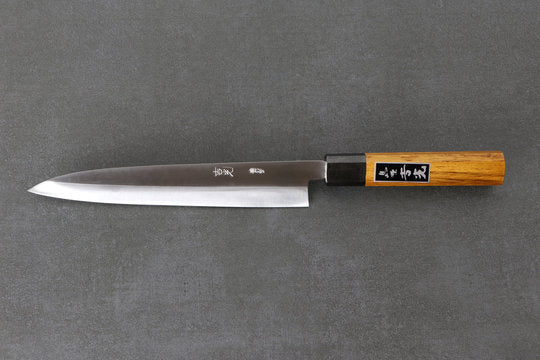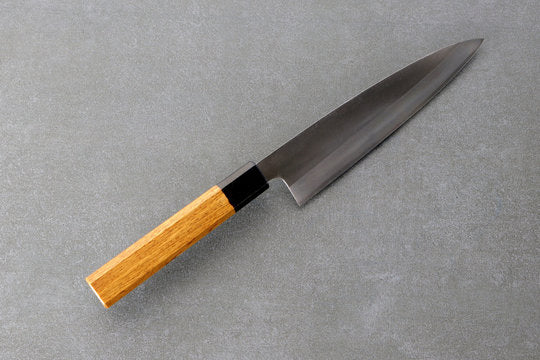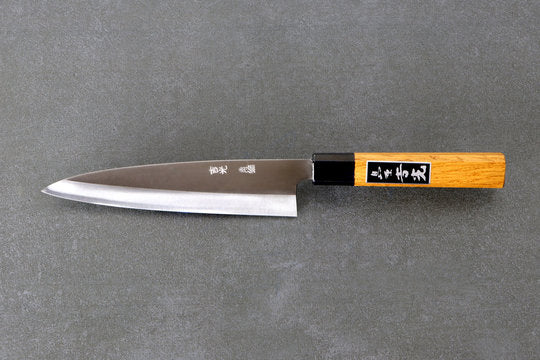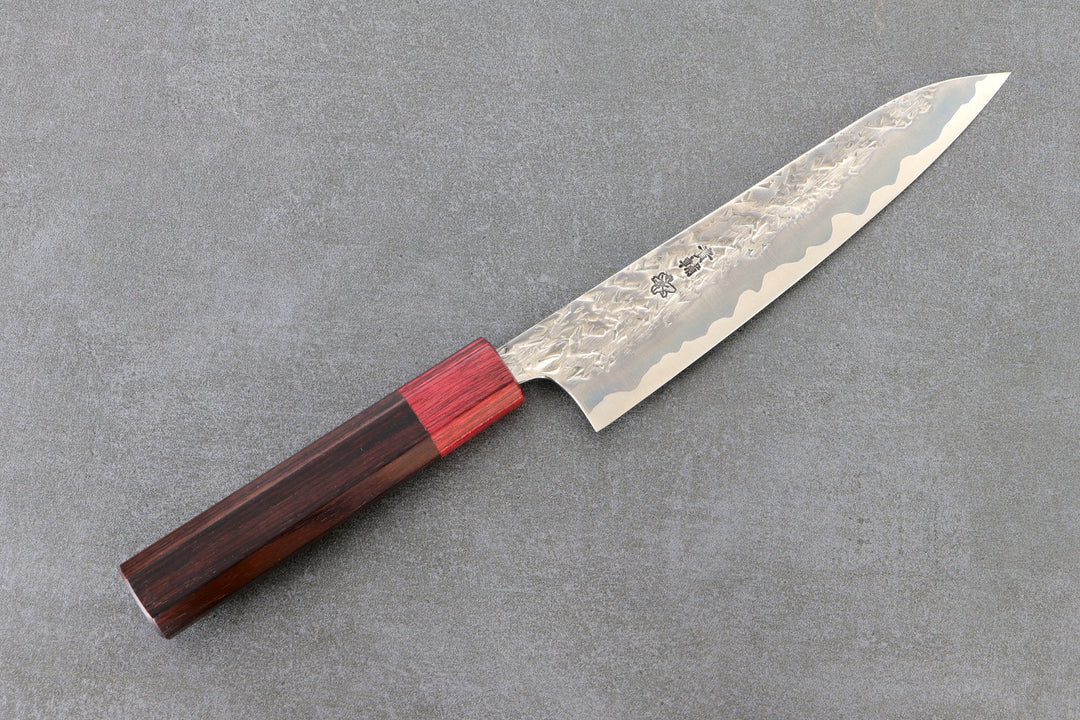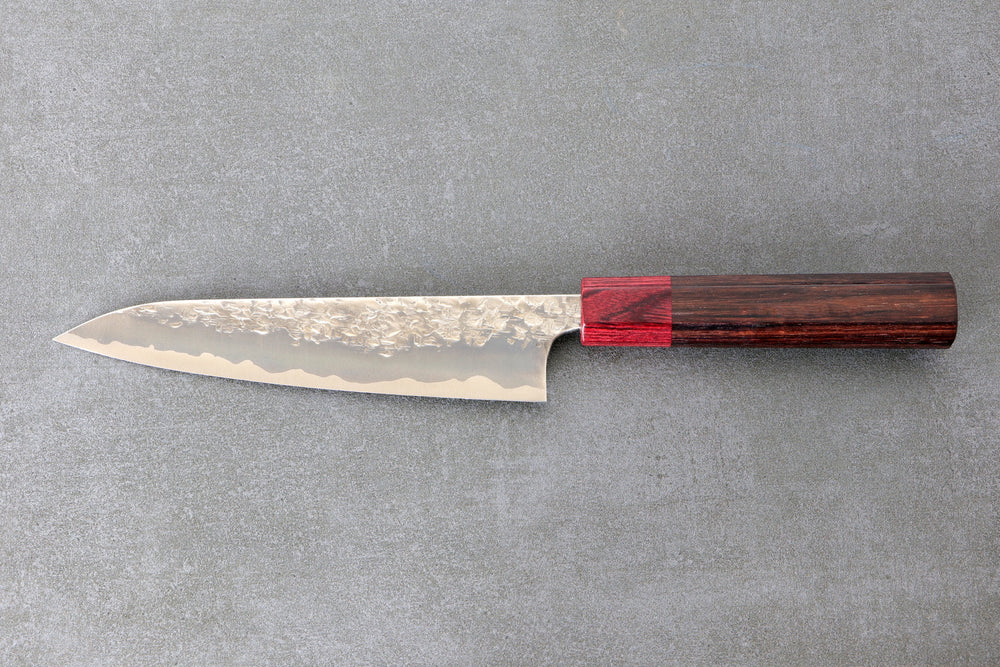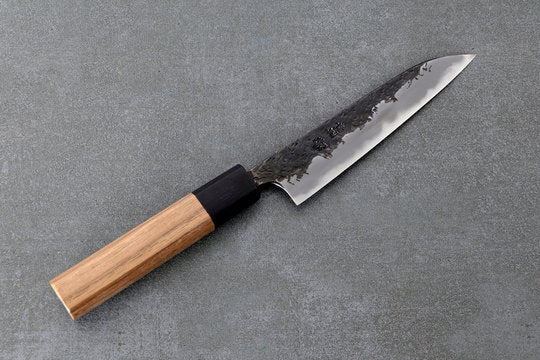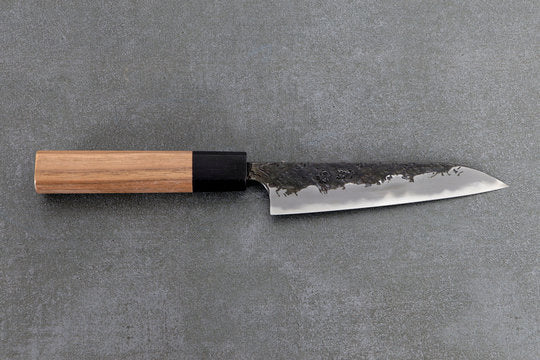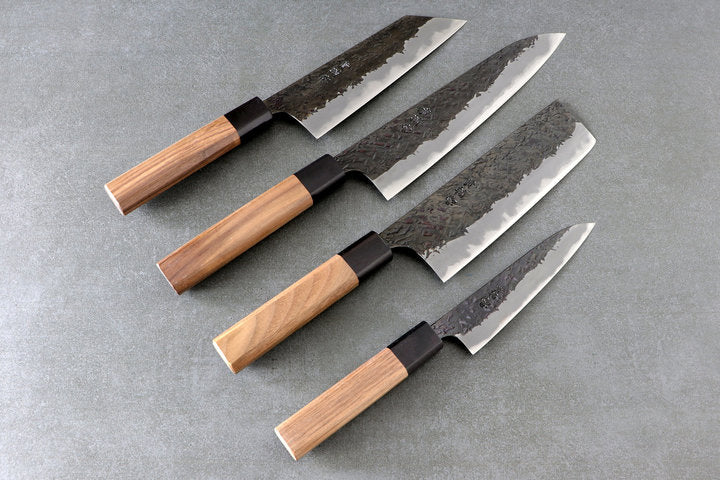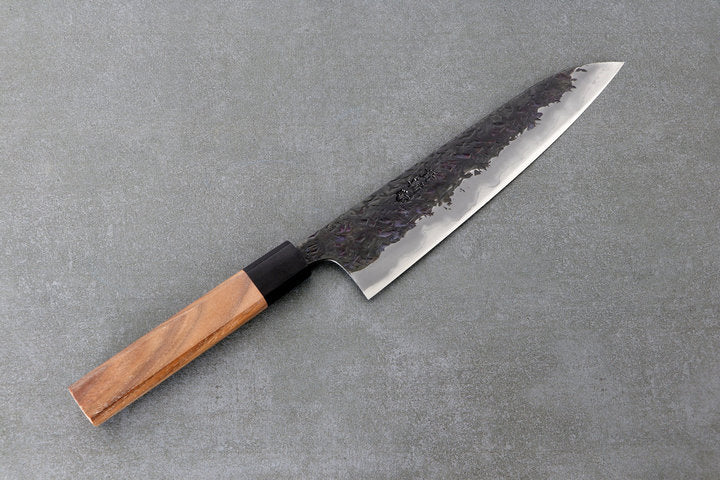
It is the Japanese equivalent of the European office knife.
Easy to handle and quite variable in use, the petty knife has the following features and characteristics:
- Blade length from 7 cm to 16 cm
- Pointed blade with practical knife tip
- Cutting edge ground on both sides, therefore suitable for right-handers and left-handers
- Ideally suited for cutting and peeling vegetables and fruit
- Can also be used for small pieces of meat or fish, as well as for removing tendons or fish skin.
Petty knives - hand forged, small and versatile.
Petty knives have a typical blade length of 75mm to 210mm. This makes them one of the smaller Japanese knife types. They are perfect for peeling and cutting fruits and vegetables.
However, the tapered, double-edged blade can also be used for delicate carving and ornamental work. Even though this Japanese knife is primarily designed for the processing of fruits and vegetables, with a longer Petty (up to 210mm blade length) the use as a filleting knife for the finer processing of meat and fish is quite recommended and widespread.
Petty knives can therefore also be called small all-purpose knives.
Original Japanese petty knives - specialists for fine work.
The blade of the petty knife is usually not longer than 150mm. It should be part of the basic equipment in the kitchen and is also seen as a small all-purpose knife.
For small cuts like fruits and vegetables, it can be used for peeling, slicing and garnishing. The low blade and sharp tip make this knife very controllable and allow for very precise cuts where the big brothers Santoku knife, Gyuto and Bunka are less suitable.
Nevertheless, the Petty can also be used for chopping smaller amounts of herbs without any problems. Again, the knife's center of gravity is usually towards the tip of the knife, as Japanese wooden handles are lighter compared to Western chef's knives.
Peeling knife from Japan, the Petty
For peeling, the Japanese variant of the office knife is often used in the kitchen. The blade shape of the European office knife and the Japanese petty knife are very similar, but there are differences. Japanese petty chef's knives are suitable for many preparation tasks in the kitchen. In everyday life quickly peel an apple, this knife is ideal for that.
After use, Japanese Petty should be cleaned and dried directly. Since Japanese knives are traditionally made of carbon steel, the blade can rust when exposed to moisture.
Mostly the handle is made of wood. The handle can be oval, round or even 8 square and fits well in the hand. The Gyuto knife can be seen as the big brother of the Petty, as the blades are similar in shape, but the blade lengths differ. So for fine tasks you can take the Petty and for large quantities then an all-purpose knife.
Petty chef's knives also vary greatly in quality. Various manufacturers offer this knife shape. On our site you will find a lot of information that supports the search for the right petty, such as the buying guide for Japanese knives.
Difference office knife and petty knife
Both knives are very identical at first glance. The scope of the small knives is also identical, so what is the difference? The office knife is usually made of softer blade steel. Therefore, it may not be as sharp or retain maximum blade sharpness for as long. Petty uses the classic Japanese steels, these are extremely hard and can be sharpened incredibly sharp.
Office knives often have a plastic handle and this is western shaped. Petty knives from Japan, in contrast, have a wooden handle in Japanese shape, i.e. round, oval or polygonal. In addition, the petty handle is often not treated, and gives more grip in moisture.
Office knives are almost always stamped mono steel blades. This is also possible with the Petty, but less often the case. Therefore, Petty blades are less flexible, but significantly sharper.
We therefore choose the Petty as the winner and hope you agree ;)


